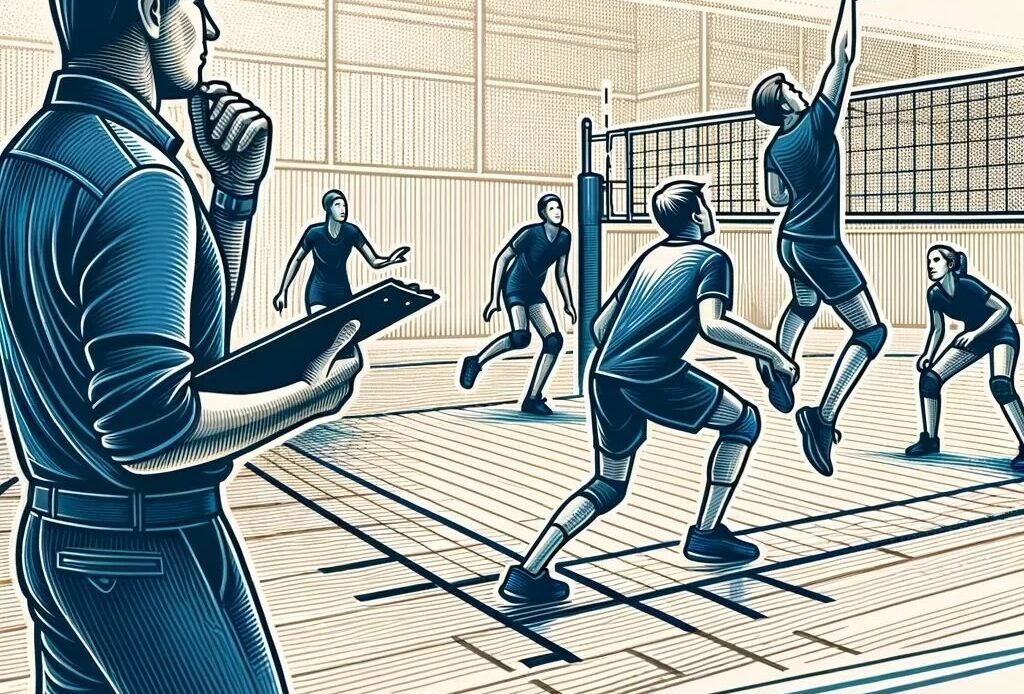One of the regular challenges of working with youngsters new to the sport is teaching them volleyball rotations and volleyball court positioning. In this post I will provide some tips and ideas to hopefully make it a bit easier.
Before getting into rotation and positions, though, let’s make sure everyone knows the overlap rules. A lot of people get that wrong – including coaches.
Teaching the Structure: Thinking in terms of variations and cues
How you start teaching volleyball rotations and positioning depends on your offensive system. If it’s a basic 6-6 where the player in one particular spot is always the setter (e.g. Position 3), it’s easy. Every rotation is the same, so there’s only one variation to teach. You just have to spin the players around the court so they know their responsibility in each position.
For a 6-3 with the setter in one of two locations (usually Position 2 or Position 3), then you only have two variations to teach. You can use cues to reinforce which one of them you’re in. For example, “Setter in 2” or “Setter in 3”. That reminds the kids of the variation. They just have to then work out what that means for them based on their position in the rotation.
A 4-2 expands on this to bring it up to three variations. Again, you can use the same type of cuing as reinforcement.
Now, going from a front row setter system like the 4-2 to a back row setter system like the 6-2 may seem like a big shift. There’s no doubt the player positioning and transitions are more complex. The thing is, though, you can follow the same progression of 6-6 to 6-3 to 4-2. Just do with with setting out of the back row.
If you’ve already done the 4-2 and 6-2 offenses, then the 5-1 is straightforward. Yes, it’s 6 different variations, but they simply repeat the two sets from the 2-setter systems. By the time you’re at this stage the kids should have the structure pretty well figured out. It’ll just be about each specific player understanding their responsibility.
Teaching the Responsibilities
The players will probably pick up the structures fairly easily. There aren’t that many to remember, after all. The bigger issue is understanding what that means for them in any given rotation. This is especially true when the players’ positions in the rotation change.
Ultimately, learning this stuff has to be done on court. To save yourself a bunch of practice time, though, give the kids some video…
Click Here to Read the Full Original Article at Coaching Volleyball…

